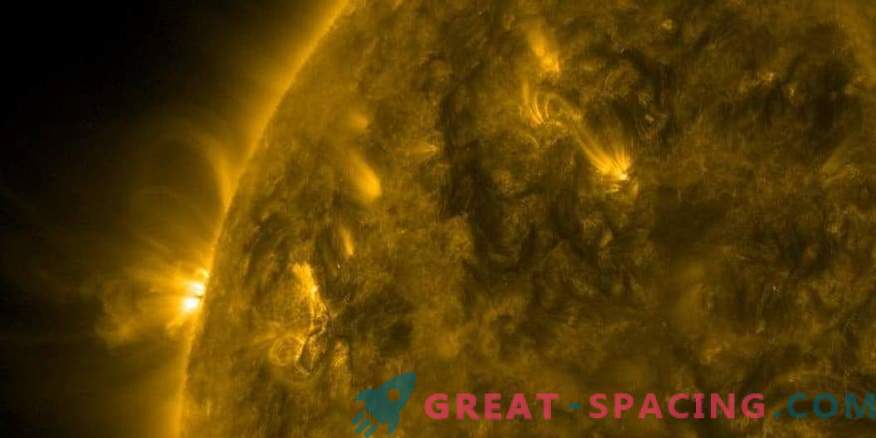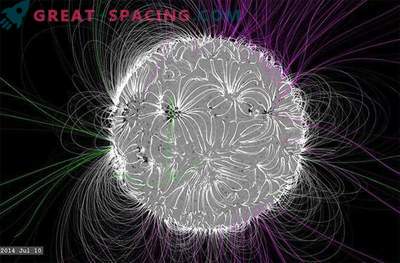
Magnetic loops rotate above the Sun (March 23-24, 2017)
Forecasts signal that by the middle of the century the Sun may emit less radiation, allowing the Earth to heat up a little more slowly. But this will not stop the trend of climate change caused by human activity.
“Cooling” is the result of what the researchers call the great minimum. This is a periodic event during which stellar magnetism shrinks, sunspots appear less frequently and the planet receives less UV rays. There is an assumption that the process is launched at irregular intervals by random fluctuations associated with the solar magnetic field.
Scientists built their models, based on geological and historical information, to wind off time to the cold European period in the middle of the 17th century. Then the temperature dropped so much that the Thames river froze on a regular basis. By the way, the freezing of the Baltic Sea allowed the Swedish army in 1658 to invade Denmark, just getting on the ice.
Researchers at the University of California at San Diego first estimated the state of the sun at the next minimum. It is known that the star lives on an 11-year cycle, where UV rays reach a maximum and are reduced due to the activity of the spots. During the period of the great minimum, UV radiation is reduced by 7% relative to the lowest point of the cycle. Now scientists have received a guideline through which climate models can be improved. To accomplish this task, the team had to analyze in detail the 20 years of data from the Ultraviolet Explorer satellite.
Solar energy activates a sequence of events on Earth, starting with a reduction in the thickness of the stratospheric ozone layer. This causes a change in the temperature structure of the stratosphere and changes the dynamics of the lower atmosphere. It should be noted that the cooling is not homogeneous. For example, while parts of Europe were cooling, temperatures rose in Alaska and southern Greenland.
Scientists predict a greater likelihood of a great minimum in the near future, as the descending signature of sunspots in recent cycles resembles upsides to past lows.
The analysis shows that the future minimum will not be able to stop the trend of global warming, but will slow down the process. For more global research, it was decided to model future changes in climate. It turns out, from 2020 to 2070. solar radiation can be reduced by 0.25%, which will lower the temperature of the earth by a few tenths of a degree Celsius.











































